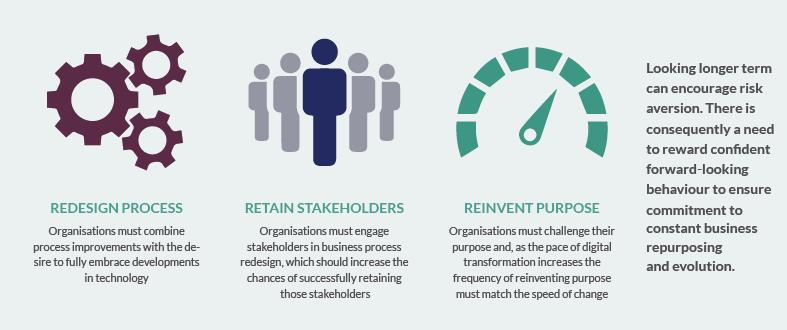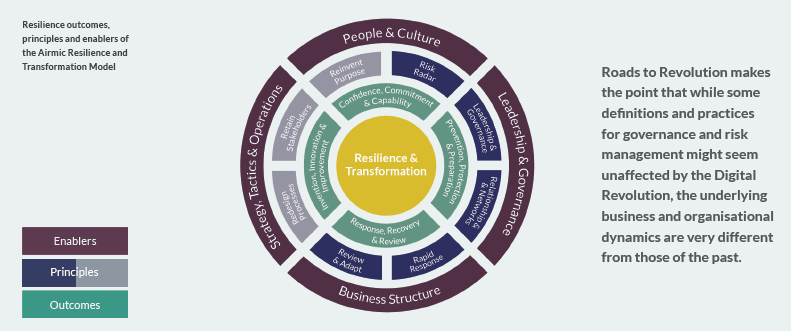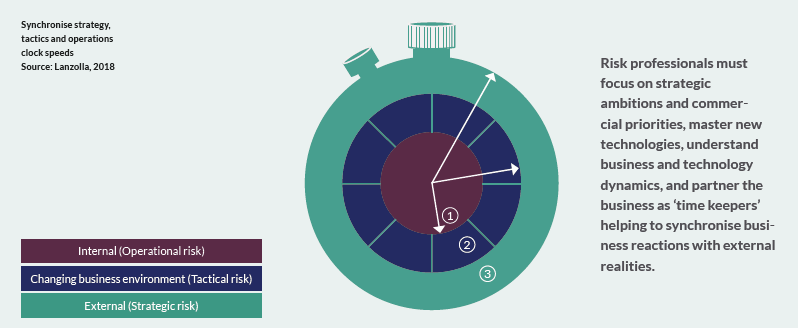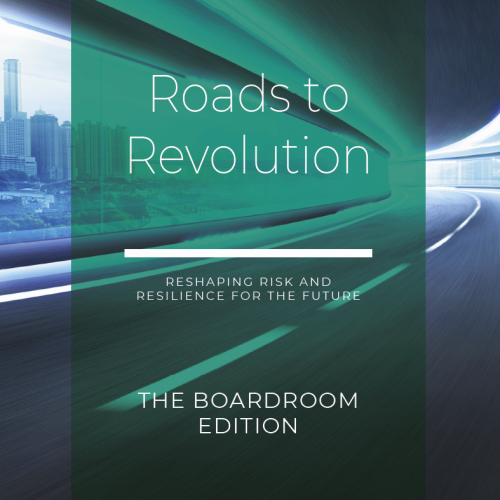Roads to Revolution - boardroom edition
Roads to Revolution
Achieving resilience is challenging and requires significant board-level support, but achieving and maintaining resilience and successful digital transformation is even more challenging.
The Roads to Ruin report published by Airmic in 2011 looked at high-profile crises at companies whose reputations were consequently destroyed www.airmic.com/technical/library/roads-ruin-analysis
The Roads to Resilience report published by Airmic in 2014 looked at how companies could avoid corporate catastrophe by learning from those who were leading the way in creating resilient organisations www.airmic.com/.../library/roads-resilience-executive-summary
The report introduced the Airmic Resilience Model.
Most organisations in the UK now rely on digital technology to function. The objective of the Roads to Revolution report is to provide advice for boards, executives and risk professionals who seek to manage risk and resilience in the context of the Digital Age
www.airmic.com/library/roads-revolution-executive-summary
The report makes the point that whilst, at face value, some definitions and practices for governance, risk and resilience might seem unaffected by the Digital Revolution, the underlying business and organisatonal dynamics are so different from those of the past, they trigger the need for a major rewiring of all three.

Cass Business School, City of London University, studied a number of leading organisations that are active in the space of digital transformation. Research concluded that ‘walking the roads to the Digital Revolution’ is not an option, it is an existential must. The report argues that boards will need to deal with more than just cyber security issues. They will need to reskill and introduce new mechanisms to deal with risk and resilience to ensure effective governance, monitoring, strategic leadership and, ultimately, legitimacy for their organisation in the Digital Age.
As new technologies emerge, there may not be enough information on which to base reliable risk assessments of the intangible risks associated with digital technologies. Boards must be alert if risk assessments of the risks associated with new technologies are directly compared to assessments of better understood, more traditional or tangible risks.
It is clear that technology represents significant transformational opportunities. Organisations will need to spend more time managing and coordinating across different organisational boundaries, which in a digital environment, create risks that are more complex, connected, uncertain and ambiguous.
The research concluded with the need to extend the five principles of the Airmic Resilience Model to include three additional resilience principles for digital transformation. These changes have resulted in the development of the Airmic Resilience and Transformation Model, which provides a comprehensive and coherent structure to enable organisations to embrace advances in technology.

Boards should seek assurance that the eight principles of resilience and transformation are implemented. However, the conversation about resilience and digital transformation is most likely to focus on the associated business enablers within the organisation, rather than the principles. There are four types of organisational resilience: Integrative, Structural, Transformational and Contextual. Each type of resilience can be used to guide the board conversation on resilience and transformation. Although all four types of resilience are required for an organisation to achieve successful resilience, they represent an aspirational hierarchy. Integrative resilience is the strongest as it is from this point that the three other types of resilience are developed into creating a mature resilience agenda.
One of the keys to an effective board is that it has a diversity of perspectives, based on a range of skills, knowledge and experience. Many industry sectors will change fundamentally in the next few years and a large part of that will be driven by technology. While the governance functions of monitoring, strategy and legitimacy remain valid, they need to be enhanced beyond the traditional approach described in the report as ‘legacy governance’.

- Fill out an application Our membership manager will assess your eligibility against our criteria.
- Complete your profileIf you are eligible for membership you will be asked to answer a few questions about yourself.
- PaymentYou can make payment online using a card or request an invoice.

